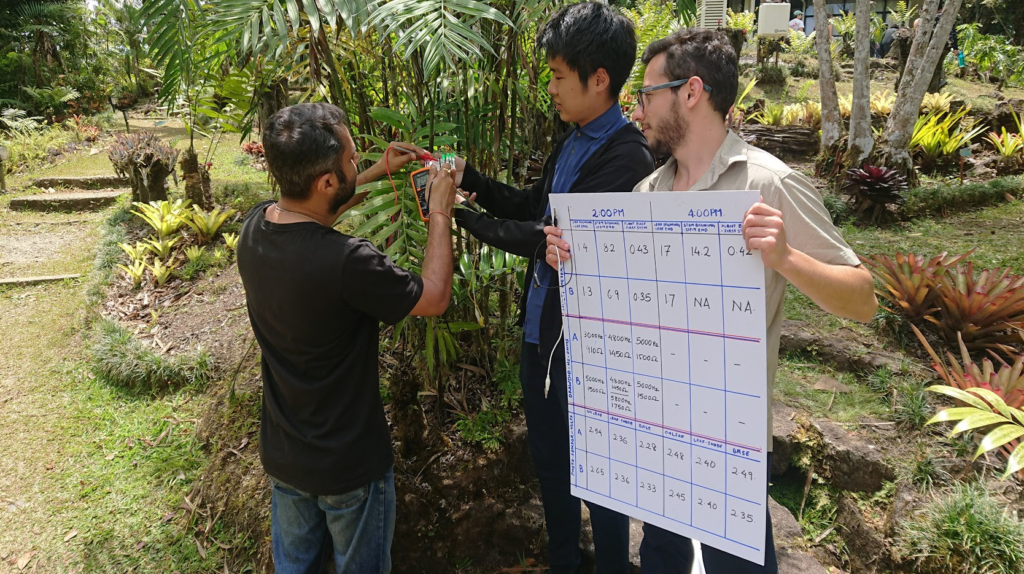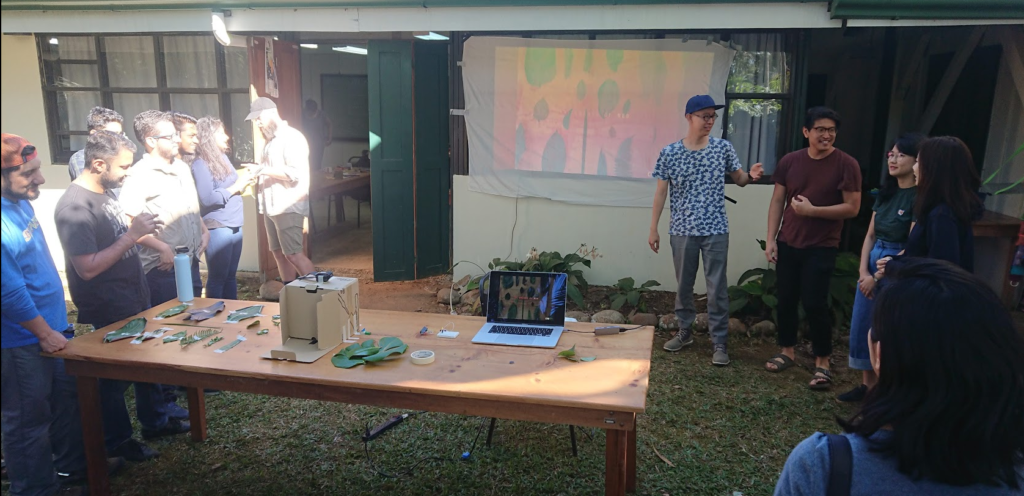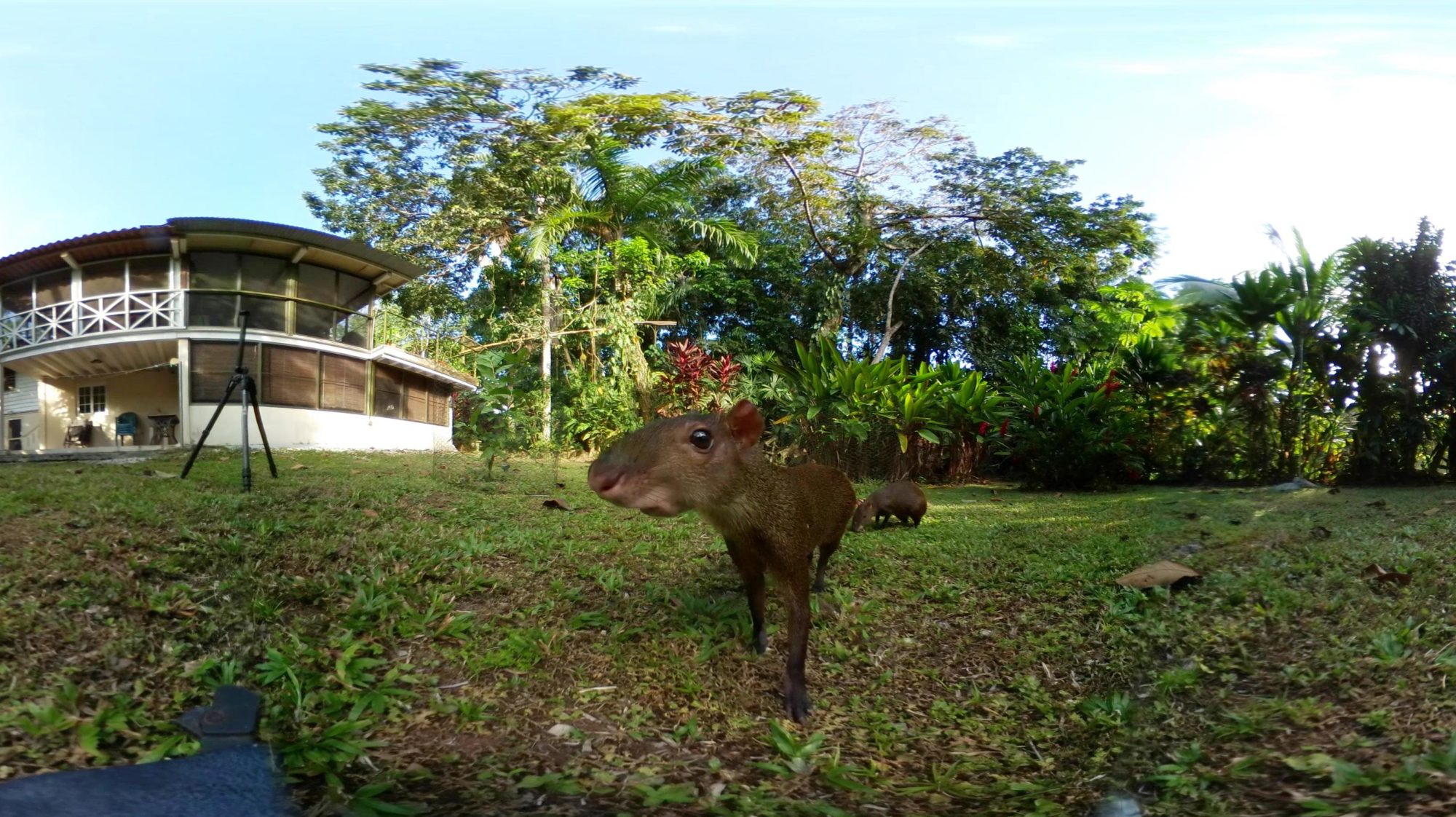In March 2020, we taught a version of the Copenhagen Institute of Interaction Design’s “Materials of Electronics Course” modified to take place at a field station in Costa Rica with Co-Instructor Paula Te.
Dates: March 9-13, 2020
Location: Las Cruces Research Station, Costa Rica

Photos
https://photos.app.goo.gl/11uvxh1bRgbVkA9d7

Workshop Schedule
(From paula’s documentation)
Course Schedule
https://www.notion.so/Materials-of-Electronics-in-Nature-2020-49e63451ab814496aefb483e49bab6e2
Day 0: Workshop setup (soldering stations, material stations, learning areas, signage, Andy’s in the wild toolkit)
Day 1:
Intro (outside under a bamboo grove). Soldering a drawdio kit. Learning about each of the components, following a trace on a PCB, drawing circuit diagram.
Students make sounds with nature. Record a clip of themselves and share out.
Simplest circuit. Coin cell + LED. Build a coin cell holder. Challenge: Firefly attraction! Create a switch for the LED.
Night hike: use our new LED + switches to mimic firefly blinking patterns. Explore nature at night!
Concepts: traces, conductivity, resistivity, sound & oscillations, energy storage, water + conductivity, timer circuits
Tools: solder, multimeter, wire strippers
Materials: nature, pcbs, drawdio kit, copper tape, coin cell battery, binder clip, LEDs, wire
Day 2:
Simple switch shareout. Circuit review. What if we wanted to power LED with 9V battery? Adding resistor into the circuit, with V=IR.
Build simple circuit with resistor in breadboard.
Solar panels, introduction. Explore range with multimeter and panel. Combine energy with actuation: LEDs, motors, etc. Create charge circuit.
Concepts: energy generation, energy storage, Ohm’s law, overcurrent in LEDs, breadboards
Tools: breadboards, wire strippers, jumper cables
Materials: resistors, solar panels, motors, charge circuit, diodes
Day 3:
Exploring more sensors and actuators. Resistive carbon paint. Photo resistive sensors. Magnetic reed switches, IR sensors. DIY potentiometers
Life sketch with electronics. Mimic something in the environment in electronics. Presenting sketches in the afternoon.
Concepts: sensors and actuators, inputs and outputs,
Tools: hacking in the wild preparedness tools (see Wearable DiNa Studio by Hannah & Andy)
Materials: carbon paint, photo resistive cells, reed switches, IR sensors, potentiometers
Day 4:
Ultimate design exploration: Go out on a hike, ask a question about nature, use the tools you have to answer those questions or learn something about it.
Day 5:
Presentations of explorations and learnings, debrief, and play.


